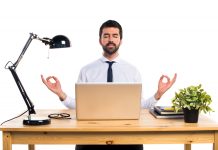- As you are aware, the Indian military inventory is majorly made up of imported arms, ammunition, equipment, spares, and parts. Our continued reliance on Russia for some of the cutting-edge military inventories is a fact that cannot be obfuscated despite Moscow being placed under sanctions for its adventure against Ukraine. Of course, not only Russia but also heavily rely upon countries like France and the United States of America to shore up our operational preparedness starkly reminds us how far behind we are in the race to become independent vis-à-vis indigenous development of military-grade equipment. Worryingly, our efforts at building adequate indigenous military infrastructure haven’t yielded the desired results so far.

PC: Freepik
- Despite the NDA led by the BJP laying tremendous emphasis on Atmanirbhar Bharat, our continued reliance on foreign countries for military inventory must raise a question or two as well as concerns at different levels. Some positive measures are afoot, but India cannot just be an assembler plus component maker of military platforms. Thus, investing in R&D is an inescapable requirement for true indigenization. In what is being played as a big leap for indigenous defence production, Modi and Spanish PM recently jointly inaugurated the Tata Aircraft Complex for manufacturing the C-295 aircraft in Vadodara. The C-295 deal was inked in 2021 with Airbus Defence and Space SA, Spain, for the supply of 56 aircraft.
- Of these 16 aircraft were to be delivered directly by Airbus from Spain, while the remaining 40 were to be manufactured at the Tata facility, the first private sector Final Assembly Line for military aircraft in India. While this sounds great, the big question is what percentage of the aircraft production will be truly indigenous. The last thing India needs is to become the world’s largest assembler of military platforms. As per reports, the C-295s will gradually incorporate local components, going from 48% local content for each unit initially to 75% local content by the final aircraft. Airbus has already identified local suppliers for this purpose. But 75% of local content is just a good start if that target is actually achieved.

PC: Freepik
- Mind you, we need to be able to produce the aircraft start-to-finish if we are to attain true indigenization. Sure, learning by doing has its merits -China too has done this for years. But it won’t lead to defence production independence. That requires indigenous development of fundamental technologies. India continues to be the largest importer of defence platforms, accounting for 9.8% of total global imports in the 2019-2023 period. This places it in a strategically vulnerable position. True, Indian defence exports have also increased in the last few years, touching $2.6bn in 2023-24. But it’s insufficient. The solution lies in massive investment in defence R&D and engineering. Defence-industry ecosystem should be built on priority.






